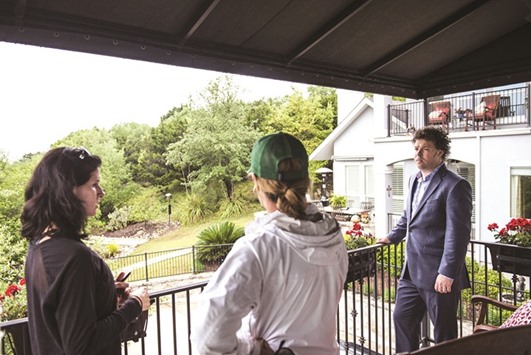US home resales fell more than expected in July after four straight months of strong gains as a lack of inventory limited choice for buyers, but further gains in prices suggested the housing market remained on solid ground.
The National Association of Realtors said yesterday existing home sales declined 3.2% to an annual rate of 5.39mn units last month.
Economists polled by Reuters had forecast sales slipping 0.4% to a 5.51mn-unit pace in July.
Home resales were down 1.6% from a year ago.
“Severely restrained inventory and the tightening grip it’s putting on affordability is the primary culprit for the considerable sales slump throughout much of the country last month,” said Lawrence Yun, the NAR’s chief economist.
Prices for US government bonds slightly extended losses after the data.
The dollar was little changed, while US stocks were trading marginally lower.
The broader PHLX housing index, which includes builders, building products and mortgage companies, was down 0.57%.
Against the backdrop of a tightening labour market that is steadily pushing up wages, and mortgage rates near historically low levels, July’s drop in sales is likely to be temporary.
The government reported on Tuesday that new home sales vaulted to a nine-year high in July.
Housing market strength along with robust consumer spending are expected to underpin economic growth in the third quarter.
Economists believe that demand for housing will be driven by the so-called millennials, a demographic group that has seen an improvement in job prospects since the 2007-2009 recession ended.
Unemployment among Americans in the 25-34 age bracket has plummeted since January last year, with the share of those with a job at the highest level since September 2008.
First-time home buyers accounted for 32% of transactions in July, up from 28% a year ago.
“We have been touting the upside for housing this year and the belief it will carry the economy along with consumption,” said Steve Blitz, chief economist at M Science in New York.”Our basic upside view on housing is rooted in a sufficient recovery of 25- to 34-year-olds with a job, the length of time they have been gainfully employed, and the cheap cost of a mortgage.”
The housing market and robust consumer spending are expected to underpin economic growth in the third quarter.
Existing home sales fell in the Northeast, the South and the Midwest in July, but rose 2.5% in the West.
The number of unsold homes on the market inched up 0.9% to 2.13mn.
But supply was down 5.8% from a year ago.
At July’s sales pace, it would take 4.7 months to clear the stock of houses on the market, up from 4.5 months in June.
A six-month supply is viewed as a healthy balance.
In July, houses typically stayed on the market for 36 days, up from 34 days in June but down from 42 days a year ago.
Supply is also being squeezed as the flow of foreclosed properties dries up. The share of distressed property sales dropped to 5% in July, the smallest share since October 2008, from 6% in June.
With inventory still tight, the median house price rose 5.3% from a year ago to $244,100 last month.
The NAR said rising prices were causing problems with appraisals, leading to delays in closing contracts.
“Appraisal-related contract issues have notably risen over the past year and were the root cause of over a quarter of contract delays in the past three months,” said Tom Salomone, the NAR’s president.

A real estate agent (right) shows a house to prospective home-buyers near Boerne, Texas. The National Association of Realtors said yesterday existing home sales declined 3.2% to an annual rate of 5.39mn units last month.


